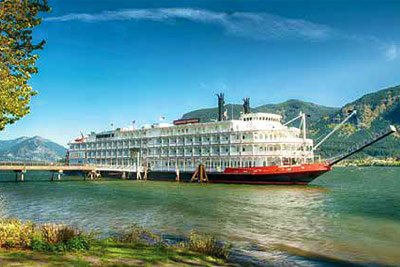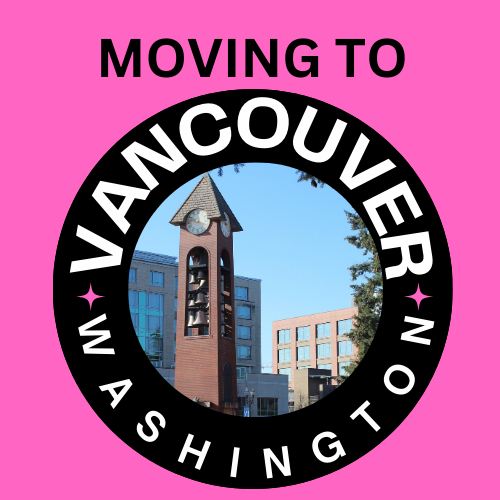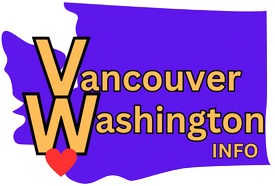
5 Reasons NOT to Move to Camas Washington
Table of Contents
Toggle5 Reasons NOT to Move to Camas Washington
Thinking about moving to Camas, Washington? Before you make any decisions, you’ll want to watch this video that discusses the five reasons not to move to Camas. The first reason is the abundance of single-family homes, which makes the city less walkable. The second reason is the high cost of living in Camas compared to neighboring Vancouver. The video also highlights the competitive and high-pressure school environment, as well as the hilly terrain that can cause issues during icy weather. Lastly, it mentions the concern that some people have about rapid development in the area. Despite these drawbacks, the speaker emphasizes their love for Camas and encourages viewers to reach out to their team for any real estate needs. If you’re considering a move to Camas, this video is a must-watch!
Surplus of Single-family Homes Making Camas Less Walkable
How the abundance of single-family homes affects walkability
Camas, a picturesque city located in Washington, boasts an abundance of single-family homes. While these homes may contribute to the area’s charm, they also pose challenges when it comes to walkability. The prevalence of single-family homes means that there are fewer mixed-use developments and shorter distances between destinations, making it difficult for residents to walk or bike to everyday amenities such as grocery stores, schools, or workplaces.
The impact of this on the community
The surplus of single-family homes in Camas has had a significant impact on the community’s overall walkability. With the lack of convenient, pedestrian-friendly routes and a dependency on vehicular transportation, the sense of community and social interactions among residents can be limited. Walking or biking becomes less of an everyday experience, resulting in decreased physical activity levels and an increased reliance on cars. The vibrant street life often associated with walkable communities becomes a rarity, creating a more isolated environment.
Possible implications on your lifestyle
If you value a walkable lifestyle that allows you to easily access amenities, opting to reside in a community abundant with single-family homes like Camas may pose challenges. The need to drive for even the most basic errands can be time-consuming and may limit the spontaneous interactions and sense of community often associated with walkable neighborhoods. However, it is essential to note that despite these challenges, Camas retains its unique charm and offers various compensating qualities that might make it a desirable living destination for some.
Exorbitant Cost of Living in Camas
Comparison of Camas’ living cost with neighboring areas like Vancouver
Camas, known for its natural beauty and desirable location, has seen a significant increase in its cost of living in recent years. When compared to neighboring areas like Vancouver, this disparity becomes even more apparent. The cost of housing in Camas tends to be higher, driving up the overall expenses associated with residing in the city, including property taxes, insurance costs, and maintenance fees.
Understanding the significant price difference
A combination of factors contributes to the exorbitant cost of living in Camas. The city’s appeal, with its small-town charm and proximity to nature, has resulted in a high demand for housing compared to the limited supply available. Furthermore, the growing popularity of Camas as a desirable living destination has led to increased competition for properties, driving up prices. This surge in demand has outpaced the rate at which new housing developments can be built, widening the gap between supply and demand and subsequently increasing home prices.
How this could affect finance management
The high cost of living in Camas can have significant implications for residents’ financial management. Housing expenses typically consume a significant portion of one’s budget, and the elevated costs in Camas can strain finances, leaving less room for discretionary spending or saving for the future. It is crucial for individuals and families considering a move to Camas to carefully evaluate their financial situation and ensure that the increased expenses associated with living in the area align with their budgetary constraints and long-term financial goals.
Competitive and High-pressure School Environment in Camas
A glimpse into the educational system in Camas
The educational system in Camas is often regarded as highly competitive and rigorous. The Camas School District is known for its dedication to academic excellence and a commitment to preparing students for future success. The district offers a wide range of programs and courses, aiming to challenge and inspire students to reach their full potential.
The reality of academic competition and pressure
While academic excellence is undoubtedly a commendable goal, the competitive and high-pressure environment in Camas schools can have potential effects on students’ overall well-being. The drive for success can sometimes result in heightened stress levels and an increased focus on academic performance at the expense of other equally important aspects of a well-rounded education, such as personal growth, creativity, and social development.
Possible effects on your children’s schooling experience
Parents considering a move to Camas with school-aged children should be aware of the potential effects of the competitive and high-pressure school environment on their children’s schooling experience. It is vital to assess whether your child thrives under such conditions or if they may struggle with the added stress and pressure. Open communication with school administrators, teachers, and other parents can provide valuable insight into the educational climate in Camas and help you make an informed decision regarding your child’s educational journey.
Difficult Terrain due to Camas’ Hilly Landscape
Uncovering Camas’ hilly geography
Camas, nestled at the foot of the picturesque Cascade Mountains, boasts a hilly landscape that adds to its natural beauty. While the undulating terrain offers stunning views and unique landscapes, it also presents challenges when it comes to transportation and mobility, particularly for pedestrians and cyclists.
The weather-related issues due to hilly landscape
The hilly landscape of Camas can create additional challenges during inclement weather conditions. The steep inclines, combined with rain and snow, can make streets and sidewalks slippery and potentially hazardous for those on foot or bicycle. Additionally, the hilly terrain can result in limited accessibility for individuals with physical disabilities or mobility limitations, making it more challenging to navigate the city independently.
How this could impact your transportation and mobility
For individuals relying on walking or cycling as their primary mode of transportation, Camas’ hilly geography can impact their mobility and transportation options. The steep inclines and uneven terrain may require additional physical effort and time to reach destinations, which could affect individuals’ schedules and daily routines. It is essential to take into account your mobility preferences and physical capabilities when considering a move to Camas, especially if you rely heavily on walking or cycling for daily transportation.
Rapid Development in Camas
Evidence of the pace of development in Camas
Camas has experienced significant growth and rapid development in recent years. New residential communities, commercial establishments, and infrastructure projects have been on the rise, transforming the city’s landscape and expanding its urban footprint. Construction cranes and bustling activity have become a common sight as Camas evolves and adapts to accommodate its growing population.
How locals feel about the rapid development
Opinions among locals regarding the rapid development in Camas are diverse. Some view it as a positive sign of progress, bringing new opportunities, business ventures, and an increased tax base to the community. Others, however, express concerns about the potential strain on existing resources, increased traffic congestion, and changes to the city’s character and small-town charm.
The potential problems associated with quick development
The pace of development in Camas may lead to a variety of potential problems. An influx of new residents and businesses can place strains on existing infrastructure, such as roads, schools, and water systems, potentially resulting in overcrowding or deficiencies in essential services. Additionally, quick development may lead to the loss of natural landscapes and open spaces, impacting the city’s aesthetic appeal and residents’ quality of life.
Camas’ Environmental Concerns
Potential environmental effects of the rapid development
As development continues to reshape Camas, there are potential environmental concerns that may arise. Encroaching on natural habitats and deforestation can disrupt local ecosystems and threaten wildlife populations. Increased traffic and pollution resulting from growing urbanization can have negative impacts on air and water quality. It is vital for the city and its residents to prioritize sustainable development practices and environmental conservation efforts to mitigate these potential effects.
How this might affect your quality of life
The environmental concerns accompanying rapid development in Camas have direct implications for residents’ quality of life. Degraded air and water quality can impact health and well-being, while the loss of natural habitats and open spaces can detract from the city’s overall appeal. As a resident, it is essential to be aware of these environmental challenges and remain engaged in efforts to promote sustainability and protect the natural beauty of the area.
Possible long-term implications for residents
The long-term implications of environmental concerns in Camas are multifaceted. If not addressed effectively, these issues could impact residents’ health, decrease property values, and inhibit the attraction of new businesses and residents to the area. Conversely, prioritizing environmental stewardship and sustainable practices can enhance the livability and desirability of Camas, ensuring its long-term prosperity and preserving its natural beauty for future generations.
Lack of Diversity in Camas
Understanding Camas’ demographics
Camas, like many other communities, exhibits a lack of diversity in its demographics. The majority of residents in Camas identify as White, and opportunities to engage with and learn from people of diverse racial, ethnic, and cultural backgrounds may be limited compared to more diverse cities. It is essential to acknowledge and understand the implications of this lack of diversity on the community’s social and cultural experiences.
The impact of lack of diversity in a community
The lack of diversity in a community like Camas can have various impacts on residents’ social and cultural experiences. It may lead to a more homogenous social network, limiting exposure to diverse perspectives and hindering opportunities for cross-cultural understanding and growth. Additionally, the absence of diverse experiences can contribute to the perpetuation of biases and stereotypes, inhibiting the city’s ability to foster an inclusive and welcoming environment for all residents.
What this means for residents’ social and cultural experiences
Residents in Camas, particularly those seeking a community that celebrates diversity and offers opportunities for intercultural exchange, may need to consider the potential limitations associated with the city’s lack of diversity. It is important for individuals and families to reflect on their preferences, values, and priorities when it comes to social and cultural experiences. Engaging in activities and organizations that promote diversity and inclusivity, both within and beyond Camas, can help mitigate the impact of this limitation.
Camas’ Limited Job Opportunities
The current job market in Camas
While Camas offers a high quality of life, it is essential to recognize that the city’s job market may present limitations for individuals seeking employment opportunities. With a higher concentration of single-family homes and a smaller commercial sector, job prospects within Camas may be more limited compared to neighboring areas. The local economy primarily revolves around industries such as technology, education, healthcare, and retail.
How this might affect employment possibilities
The limited job opportunities within Camas can impact individuals seeking employment in specific industries or those looking for career advancement. Depending on your professional goals and the industry in which you work, finding suitable positions within Camas may prove challenging. It may be necessary to consider commuting to neighboring cities or exploring remote work options to expand your employment possibilities.
Implications for career advancement and financial stability
The limited job opportunities in Camas can also have implications for career advancement and long-term financial stability. Availability of higher-level positions or opportunities for professional growth can influence individuals’ career trajectory and earning potential. It is crucial for individuals contemplating a move to Camas to carefully consider their career aspirations and assess whether the local job market aligns with their professional goals.
Camas’ Remote Location and Transportation Issues
Geographical location of Camas
Situated in the eastern part of Clark County, Camas has a somewhat remote location that can pose challenges regarding access to major urban centers, transportation infrastructure, and commuting opportunities. While this geographic isolation may be appealing to those seeking a quieter, less bustling lifestyle, it is essential to consider potential transportation issues associated with the city’s remote location.
Possible issues with commuting and transportation
Commuting to and from Camas can be more time-consuming compared to living in closer proximity to larger urban centers. The limited options for public transportation, coupled with the distances to major cities like Portland, can result in longer commute times and increased reliance on private vehicles. Additionally, the absence of comprehensive transportation infrastructure within Camas itself may pose challenges for residents seeking convenient public transit options for daily commuting or leisure activities.
What this means for daily travel and convenience
Residents of Camas should be aware of the potential impact of the city’s remote location on their daily travel and convenience. Longer commute times can result in less leisure or family time, imposing additional stress and fatigue. It is essential to consider your personal preferences and priorities when it comes to commuting and daily travel to ensure that Camas aligns with your lifestyle requirements and transportation needs.
Conclusion
Weighing the pros and cons before moving to Camas is crucial to making an informed decision that aligns with your preferences and priorities. While the surplus of single-family homes may detract from walkability and the exorbitant cost of living may pose financial challenges, Camas offers a unique charm and various compensating qualities. The competitive school environment, difficult terrain, rapid development, environmental concerns, lack of diversity, limited job opportunities, and remote location are all aspects to consider when evaluating whether Camas is the right fit for you. Understanding the potential implications on your lifestyle, career, and overall well-being is essential. Remember to conduct personal research, connect with local resources, and engage with the community to gain a comprehensive understanding of what living in Camas entails. Despite the drawbacks, many residents find Camas to be a wonderful place to call home, cherishing its natural beauty, tight-knit community, and the warmth of the people.
You May Also Like

Can I Take A Boat Tour Of The Columbia River In Vancouver Washington
6 August 2023
Moving to Vancouver Washington
4 August 2023


